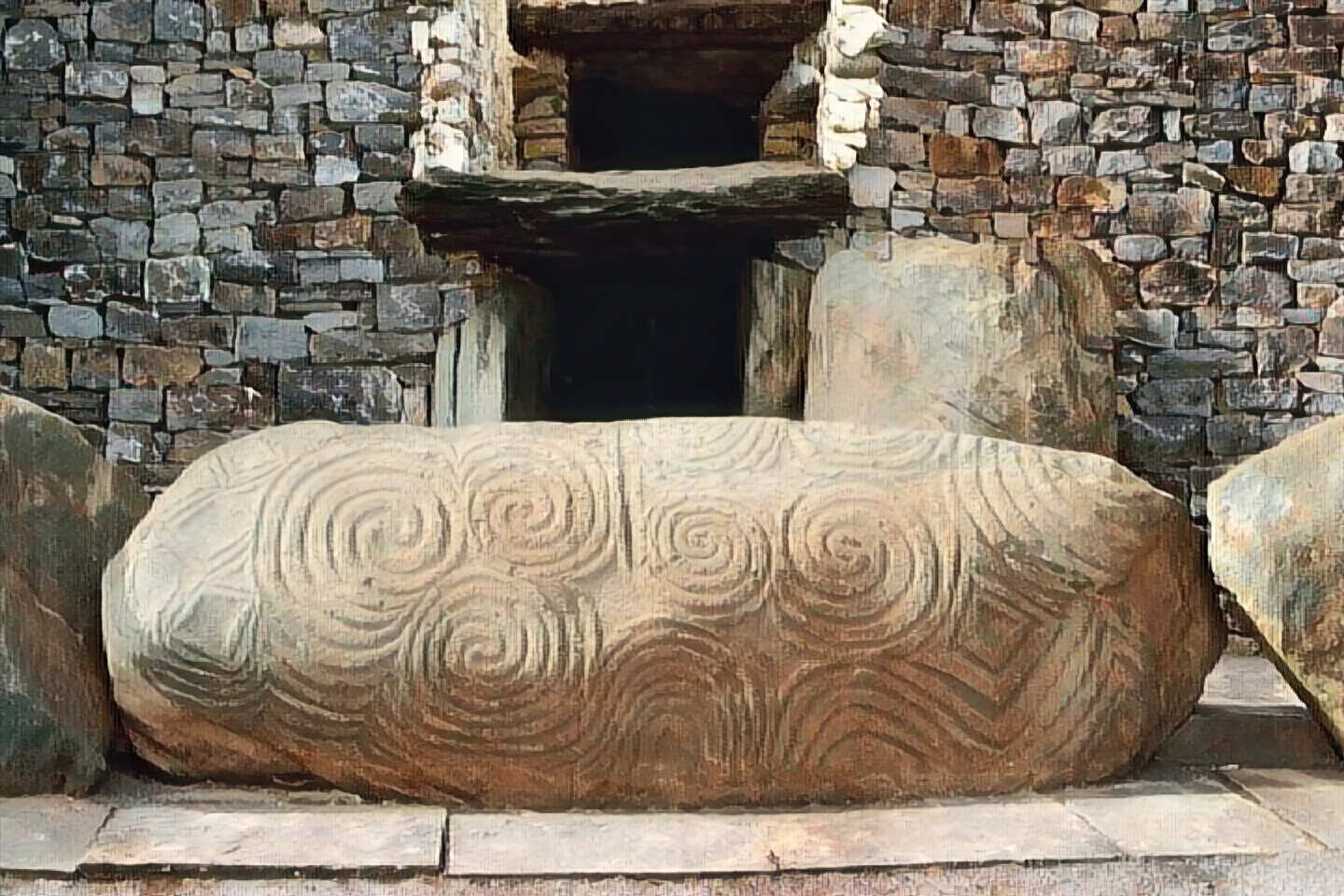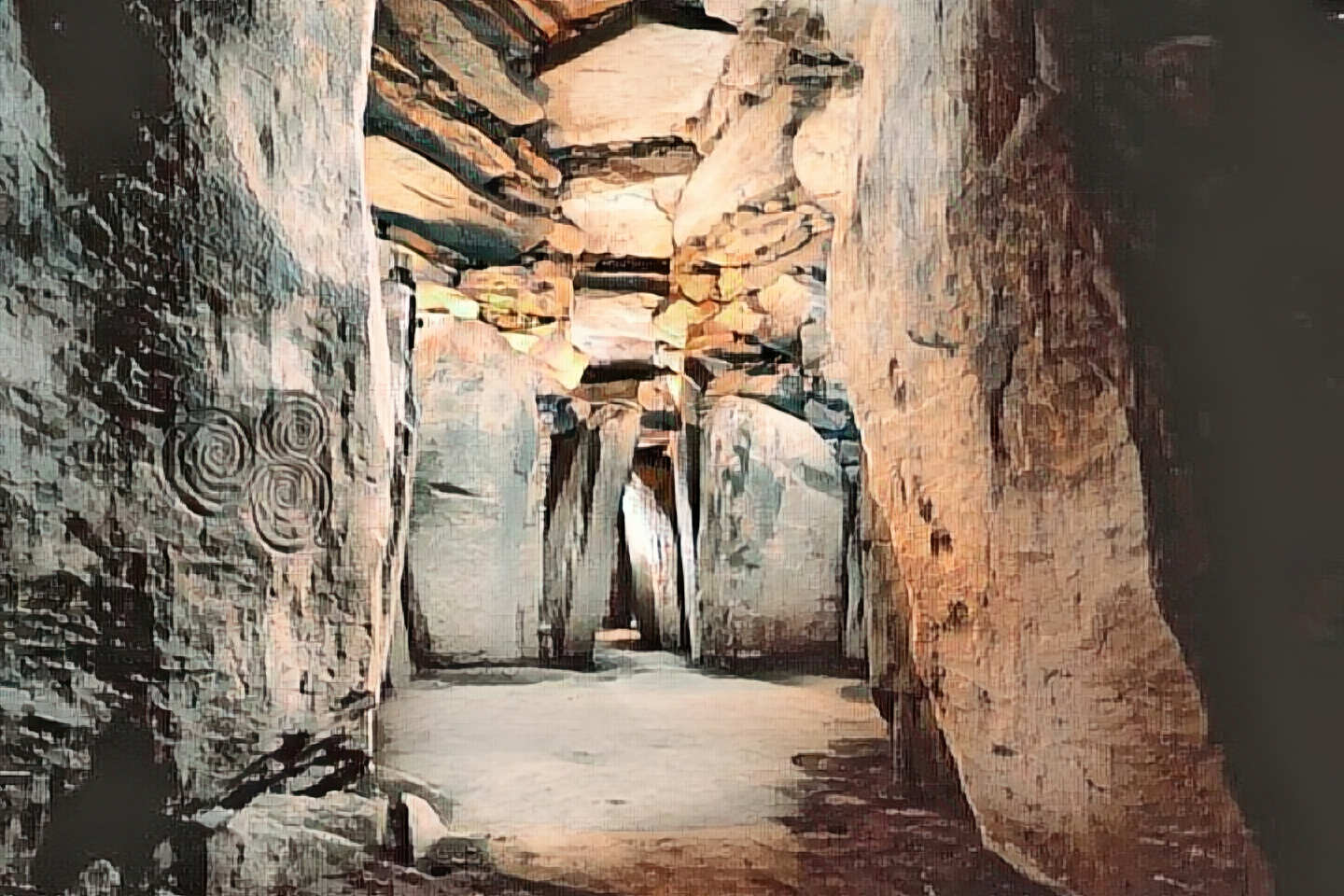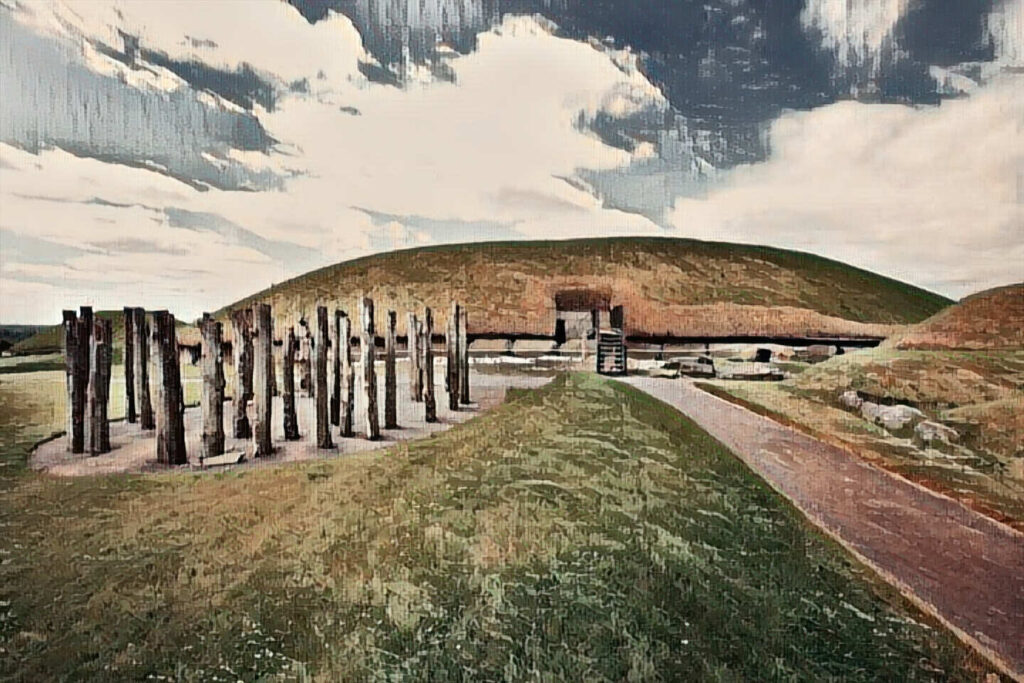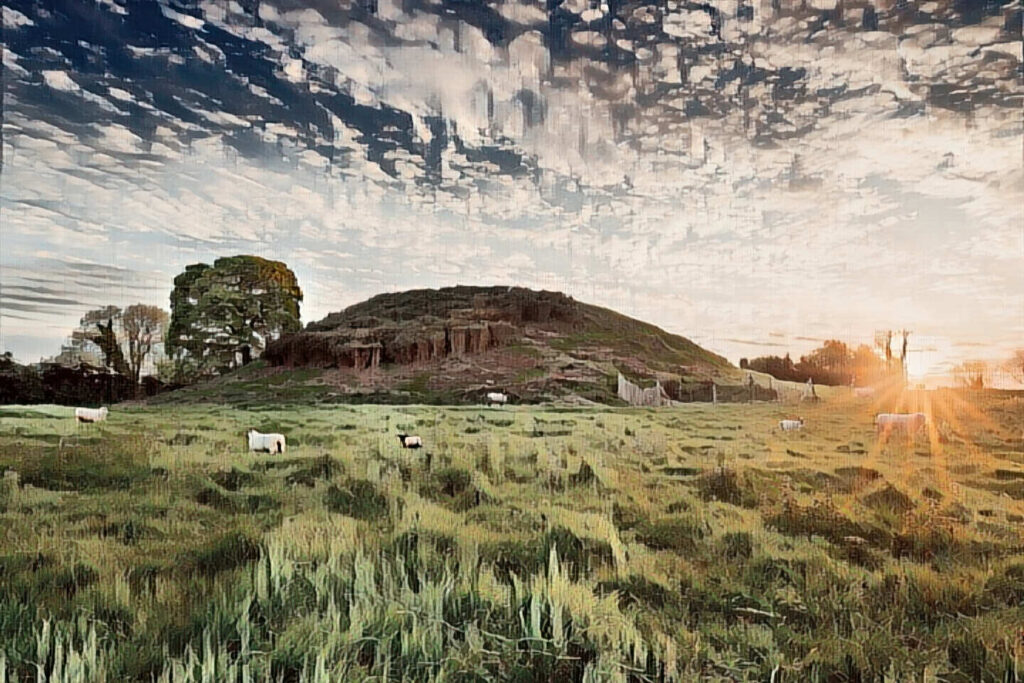Brú na Bóinne is an archaeological complex located in County Meath, Ireland, that contains some of the most important prehistoric megalithic sites in Europe. The complex, which is also known as the Bend of the Boyne, includes the passage tombs of Newgrange, Knowth, and Dowth, as well as several other smaller tombs and standing stones. These sites date back to around 3200 BCE, making them older than Stonehenge and the Egyptian pyramids.
It is considered as a UNESCO World Heritage Site since 1993, as it contains the largest and most important group of passage tombs in Europe. The tombs are built of large stone blocks and are covered with earth mounds. They are also decorated with elaborate carvings of spirals, lozenges, and other geometric designs. The passage tombs are aligned with the rising sun on the winter solstice, allowing sunlight to enter the burial chamber for a brief period each year. This alignment suggests that the ancient builders of these sites had a deep understanding of astronomy and a strong religious or ceremonial significance to the site.
Newgrange
The passage tomb at Newgrange is estimated to be over 5,000 years old and is considered one of the most significant prehistoric sites in Europe.The Newgrange Entrance Stone is the most well-known symbol of Ireland’s prehistoric past and the crowning achievement of the neolithic passage-grave builders of the Boyne Valley. The left side of the Entrance Stone is covered in an enormous triple spiral etched with double loops. The spirals spin clockwise as they approach the center and counterclockwise as they leave it.


Another inscription on a stone along the corridor echoes the triple spiral, and a third can be found in the farthest corner of the inner room. One of the most prevalent (and simplistic) interpretations of this stone is that the large triple spiral depicts the three enormous cairns; the spirals on the right indicate some of the smaller mounds; and the wavy lines at the bottom reflect the River Boyne. The squares, rectangles, and triangles in this plan are the original farmland. Some researchers think the spirals symbolize the sun.
One of the most unique features of Newgrange is its alignment with the sun. During the winter solstice, the shortest day of the year, the sunlight enters the passage tomb and illuminates the inner chamber. This phenomenon only occurs for a brief period of time, around 17 minutes, just before sunrise on the winter solstice. The sunlight enters the tomb through a roofbox, which is a small aperture above the entrance to the passage. The light then travels down the passage and into the inner chamber, illuminating the art and carvings that adorn the walls.
The alignment of the passage tomb with the winter solstice sunlight is believed to have been a deliberate design feature, and it has led to speculation about the significance of the solstice to the ancient builders of Newgrange. Some experts believe that the alignment was used to mark the beginning of the new year, while others suggest that it was used as a way to mark the passage of time, or as a way to connect the living with their ancestors. It is an impressive architectural feat of the ancient people and its still standing today, the alignment of the passage tomb with the winter solstice sunlight is a testament to the precision and knowledge of astronomy and engineering by the ancient people who built it.
Knowth
The Knowth tomb is believed to have been built around 3200 BC, making it one of the oldest structures of its kind in Europe. The tomb consists of a large circular mound, or tumulus, which is surrounded by a kerb of large stones. The mound is over 90 meters in diameter and is thought to have originally been about 12 meters high. At the top of the mound, there is a flat area, or summit, which is thought to have been used for ceremonies and rituals. The main feature of the tomb is the passage that runs through the center of the mound.

The east-west orientation of the passages at Knowth suggests astronomical alignment with the equinoxes, however the alignment at Knowth does not occur today and may have been destroyed over time. The tomb at Knowth is particularly notable for the large number of satellite tombs and other monuments that are located around the main mound.
Dowth

Dowth is presumed to be contigious with the other megalithic tombs at Bru na Boinne, between 3200 and 2900 BC, but some experts disagree and place it later around 2500-2000 BC. The tomb is less popular than its neighbours due to its lower chamber and less visible decoration. The tomb consists of a cairn or tumulus that is 85 metres in diameter and 15 metres high, surrounded by large kerbstones, some of which are decorated. Three stone-lined passages lead into the mound from the west, including two passage tombs and a souterrain.
The longest of the passages, Dowth North, is 18.2 metres in length and ends in a cruciform chamber with a lintelled roof. Dowth South is 3.5 metres long and ends in a roughly circular chamber with a modern concrete roof. Dowth shares a special solar celebration with Newgrange during the winter solstice.
In Irish mythology, the medieval Dindsenchas (lore of places) tells a story about Dowth (Dubhadh), in which a king named Bresal Bó-Díbad compelled the men of Ireland to build a tower to heaven within a day. His sister cast a spell to make the sun stand still so that one day lasted indefinitely. However, Bresal then commits incest with his sister, which breaks the spell and the sun sets, causing the builders to leave, hence the name Dubhadh (‘darkening’). This tale has been linked with solstice alignments at Brú na Bóinne and DNA analysis which found that a man buried at nearby Newgrange had parents who were most likely siblings, suggesting that knowledge of the events may have survived for thousands of years before being recorded as a myth in the Middle Ages.

